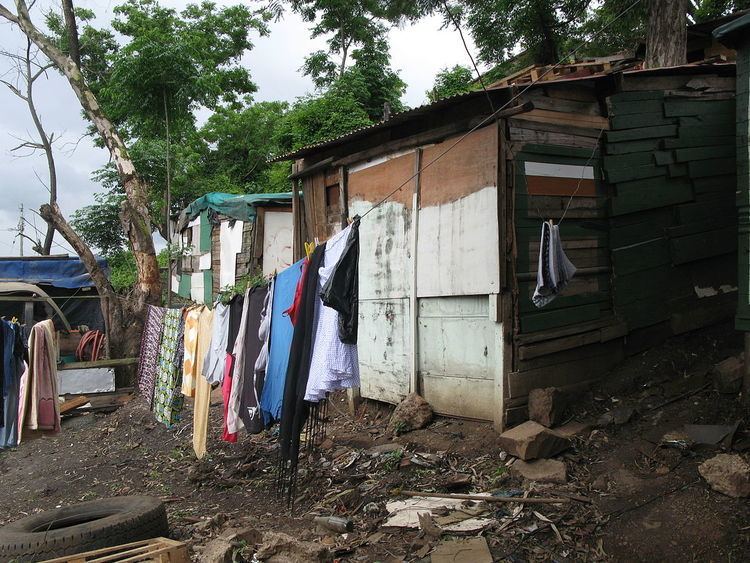 | ||
Whoonga (also known as nyaope or wunga) is a street drug that has allegedly come into widespread use in South Africa since 2010, mostly in the impoverished townships of Durban, although it is claimed to be appearing in other places in South Africa as well. The drug is said to contain antiretroviral drugs particularly efavirenz of the type prescribed to treat HIV, but analysis of samples shows no such content, and police have remarked that dealers are known to add "all sorts of stuff" to a drug to bulk it out. In 2014, Vice magazine correspondent Hamilton Morris did a piece on this, titled Getting High on HIV Medication.
Contents
Recreational
Whoonga is used as recreational drug, it generates intense feelings of euphoria, deep contentment and relaxation. It is also reduces appetite. Effects of whoonga may last two to four hours. The drug is usually smoked, with cannabis in the form of a joint, however some methods of preparation for injection exist.
Contested claims of anti-retroviral content
Whoonga is famous for allegedly containing antiretroviral drugs prescribed for HIV, but its exact ingredients are disputed and it has been argued that the claim that the drug contains AIDS medication is simply an urban legend.
One version of the claim is that whoonga contains classic psychoactive drugs such as cannabis, methamphetamine or heroin potentiated by interactions with the antiretroviral ritonavir. Another is that the drug contains efavirenz (alone or with the ingredients mentioned above), another antiretroviral which has psychoactive side effects.
AIDS experts point out that the ingredients of the anti-retroviral drugs are unlikely to cause the whoonga high and users may be fooling themselves in that regard. A laboratory analysis of samples of whoonga failed to detect any anti-retroviral drugs in its makeup, and a medical scientist who has analysed the contents of the drug has concluded that it does not contain AIDS anti-retroviral medication. According to some experts of the South African Police Service and drug rehabilitation centres whoonga is essentially just a rebranding of older heroin based drugs. A member of the police's Organised Crime Unit has said that "drug dealers add all sorts of stuff to the heroin, the primary ingredient, just to increase the mass of the drug when it's sold and make the heroin go further. A lot of the stuff has no effect and users have no idea what's going in."
The anti-retroviral drugs allegedly used to make whoonga are part of those distributed in the area to patients with HIV, being on government treatment projects. The claimed major source of the anti-retrovirals appears to be robbery from HIV patients, with media reports claiming that patients are being mugged for their pills as they leave the clinics where they obtain them. Reports also claim that some patients sell their HIV medications and that some corrupt health workers may be selling the anti-retrovirals illegally into the whoonga market.
A Harvard School of Public Health researcher has expressed concern that people with HIV who smoke whoonga may develop mutant strains of the HIV virus which are resistant to the medication. HIV drug resistance is growing due to recreational use of HIV drugs efavirenz and ritonavir, rendering them ineffective not only for users but non-users as well, with one study showing that 3% to 5% of people with HIV in areas where whoonga was used were showing "pre-treatment resistance" to antiretroviral drugs used to treat HIV.
Dr. David Grelotti suggests that street use of AIDS anti-retroviral medication efavirenz (sold as Sustiva in the US) could exploit the HIV drug's "well-known tendency to cause especially vivid and colorful dreams and other central nervous system effects. Hypothetically, that could enhance the effects of marijuana, methamphetamine, heroin and other illicit drugs." Also the other drug ritonavir (brand name Norvir), is thought to enhance or prolong the effects of some street drugs, such as MDMA or Ecstasy.
Access
The cost of the drug is reported to be about 30 Rand (Approximately US$2.20, as of October 2016) per straw. Reports indicate that a whoonga addict needs several doses a day, however, users are typically too poor to afford the drug out of their legal income. Addicts therefore turn to crime to raise the money for their supply. Some addicts do small work such as gardening and working on cars as mechanics. There are reports that claim whoonga addicts attempt to become HIV-positive, since anti-retrovirals are distributed to HIV patients free of charge by the Department of Health, however, this claim is just by speculation as some addicts are already HIV positive and simply try to apply at the clinic as someone else in order to get double doses. Some addicts apply for medication at multiple clinics
According to a report in The Sowetan, the organisation Whoonga Free, founded to battle addiction to the drug, collapsed for lack of funding in March 2011.
As of 28 February 2013 the South African Department of Justice and Constitutional Development has been in the process of amending the Drugs and Drug Trafficking Act 140 of 1992 so that the possession and trafficking of the drug is made illegal.
Whoonga is easily accessible as a lot of addicts use marijuana as a catalyst to burn it, so generally, marijuana dealers also sell it.
In early 2017 a growing trend of sharing the drug induced high through minor blood transfusions was identified by local media in a practice known as 'bluetoothing' (named after the Bluetooth wireless technology). This is done so as to more economically share the high amongst users. The blood can also be purchased from a first user for R10 for about 10 millimetres of blood.
Adverse Effects
The effects of nyaope typically wear off in a 6 – 24 hours allowing for onset of unpleasant side-effects. These include agonizing stomach cramps, back ache, sweating, chills, anxiety, restlessness, depression, nausea and diarrhea.
